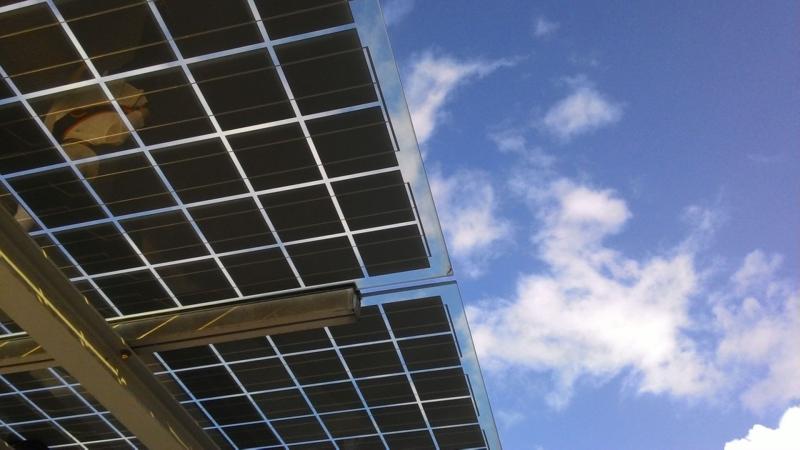
In a first of its kind study in India, scientists from Indian Institute of Technology Bombay (IITB) and National Institute of Solar Energy, New Delhi, conducted a detailed survey at 51 locations across India to check for the degradation in the performance of photovoltaic modules. This study, to establish reliability of the modules, could help India achieve the ambitious dream of 100 GW of solar energy by 2022. Researchers observed that photovoltaic modules degraded faster in hot places, on rooftops, and in installations of smaller size.
Investment in solar energy in India is large and it is essential to evaluate the long-term performance of photovoltaic modules, since the energy yield over the years would determine the return on investment. Hot climate may cause yellowing and failure in solder joints, and improper handling of modules may cause micro-cracks in solar cells. Such degradation causes energy yield to reduce.
"The important thing, is not just how much power is installed (GW), but how much energy (GW-hr or kWh) the photovoltaic modules generate over the estimated 25 years of their life. If the modules degrade more rapidly than expected, they will generate less energy than planned," says Prof. Juzer Vasi of IIT Bombay and co-author of the study.
Prof. Vasi, his colleague Prof. Anil Kottantharayil and team performed multiple tests including current-voltage characterisation and infrared thermography and tested for interconnect breakage and insulation resistance. They inspected 1148 solar modules spread over 51 locations across the country and estimated the degradation in their performance over the years. The chosen locations were grouped into 6 climatic categories; Hot and Dry, Warm and Humid, Composite, Moderate, Cold and Sunny and Cold and Cloudy.
Locations that enjoy good sunlight for many days of the year are good for setting up solar plants. Many plants are coming up in such locations in Rajasthan, Gujarat, Madhya Pradesh and Andhra Pradesh. But researchers observed that installations in hot and dry locations showed larger number of solder joint failures and yellowing of the encapsulant materials.
“Ideally locations with cold climate with lot of sunlight are best suited for installation of solar modules. In India this happens only in Ladakh, where we do not have connectivity to the rest of the Indian grid, nor good local connectivity,” says Prof. Vasi explaining why we have no option but to stick to hot and dry areas with good sunlight.
Another important observation was that the rooftop installations degrade faster than those in larger power plants. Of the planned hundred GW, 40 GW is expected to come from roof-top installations, so this observation is very significant. “Since we see that rooftop installations are degrading more rapidly than the large power plants, maybe it will be a good move to reduce the target of 40 GW for rooftop, and instead increase the 60 GW target for large ground-mounted plants”, says Prof. Kottantharayil.
Since installations in India will be in hot and dry areas, ensuring that initial quality of modules is good, is important. This needs to be accompanied by good handling and best installation practices. It may seem initially costly to use high-quality photovoltaic modules with few or no cracks or to employ trained personnel during installation, but it is essential to ensure least degradation in the long run.
Given that India has already invested a huge sum in the field of solar energy and is about to make heftier investment in the coming years, studies like this become all the more important. “Many recommendations can be (and have been) made based on the survey, and if taken up by the government and power plant owners, they would ensure a good long term energy yield” commented Prof. Kottantharayil. With further surveys planned in 2018 and 2020, these scientists plan to generate more extensive and reliable data. Surveys like this, with increased scope and diversity, can definitely help achieve the National Solar Mission targets.
This article can be found on the IIT Bombay website here.






